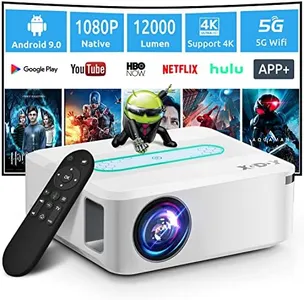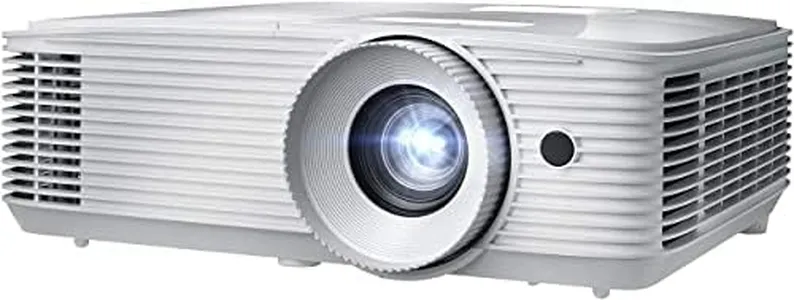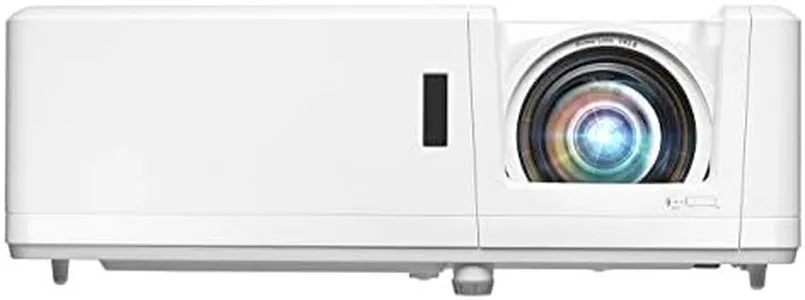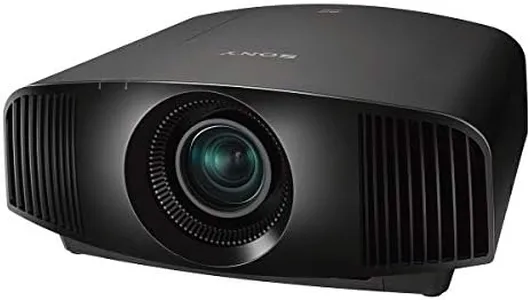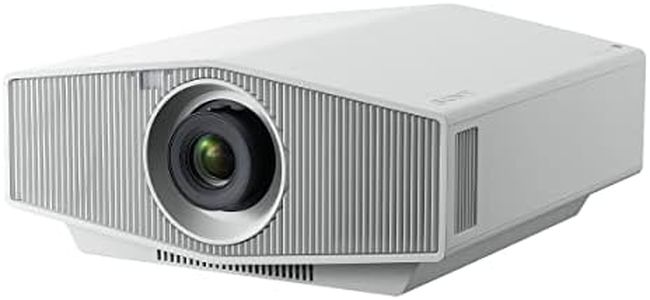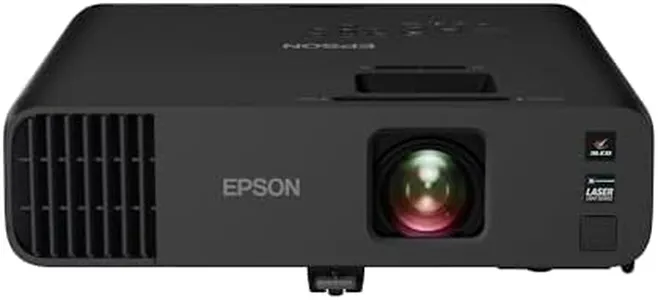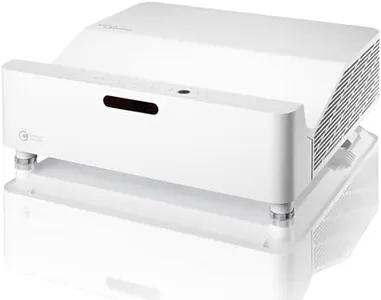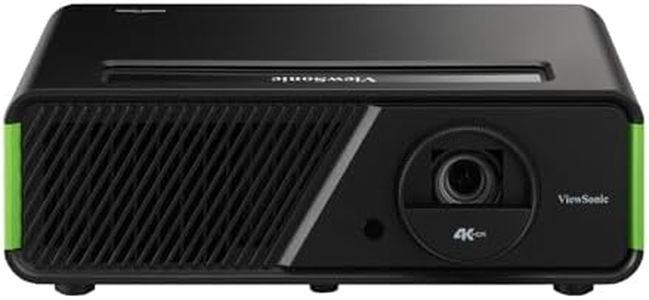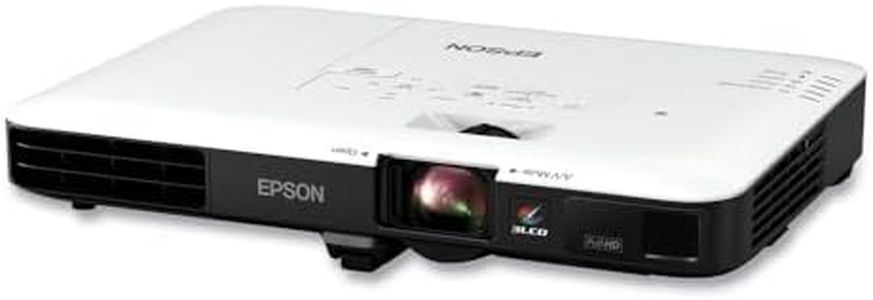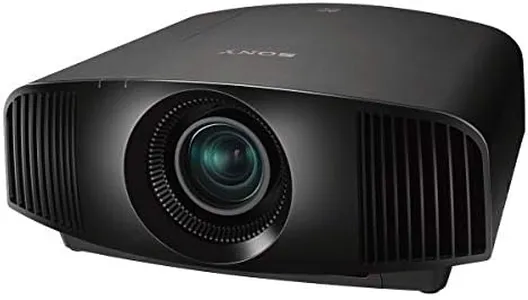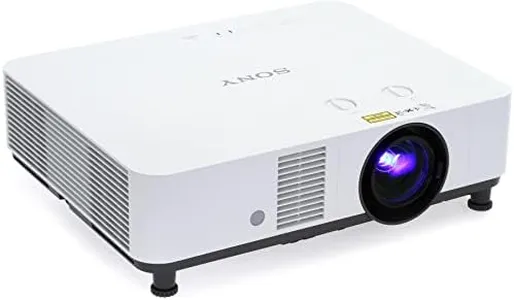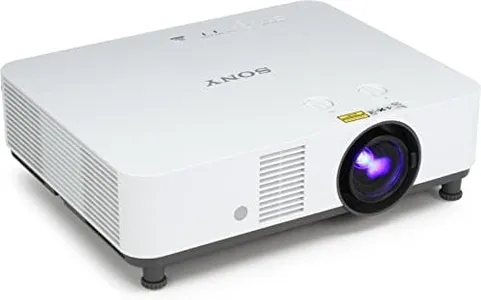10 Best Hd Projectors 2025 in the United States
Our technology thoroughly searches through the online shopping world, reviewing hundreds of sites. We then process and analyze this information, updating in real-time to bring you the latest top-rated products. This way, you always get the best and most current options available.

Our Top Picks
Winner
Optoma EH412x Professional 1080p Projector | 4,500 Lumens for Daytime Use in Meetings, Training and Classrooms | 15,000 Hour Lamp Life | 4K HDR Input | Built-In Speaker
Most important from
185 reviews
The Optoma EH412x Professional 1080p Projector stands out for its brightness and versatility. With 4,500 lumens, it performs well in brightly lit rooms, making it ideal for daytime meetings, training sessions, and classrooms. Its full HD resolution delivers sharp and vibrant images, and the support for 4K HDR input ensures enhanced color and detail when connected to compatible sources. The impressive 50,000:1 contrast ratio enables rich colors and deeper blacks, contributing to a vivid viewing experience.
The projector's throw distance flexibility is enhanced by the 1.3X zoom and vertical keystone correction, making it easier to set up in various room configurations. Connectivity options are ample, with two HDMI ports, audio in/out, USB-A, and RS232, accommodating a range of devices. The built-in 10-watt speaker is sufficient for small to medium-sized rooms, though external speakers might be necessary for larger venues. The lamp life of up to 15,000 hours significantly reduces maintenance costs over time.
However, the product is somewhat bulky at 7.3 pounds and may not be as portable as lighter models. Additionally, while it suits professional and educational environments well, hardcore gamers might seek projectors with even sharper resolutions or higher refresh rates. The Optoma EH412x is a solid choice for professional settings, offering reliability and high performance with a few considerations regarding its size and specific use cases.
Most important from
185 reviews
Optoma ZH406ST Short Throw Full HD Professional Laser Projector | DuraCore Laser Technology | High Bright 4200 lumens | 4K HDR Input | Four Corner Image Adjustment | Network Compatible
Most important from
82 reviews
The Optoma ZH406ST is a short throw full HD projector designed primarily for business, educational, and digital signage uses. It projects a large 120" image from just over 4 feet away, making it a great choice for smaller spaces where traditional projectors might not fit. Its high brightness of 4200 lumens ensures clear images even in well-lit environments, complemented by a sharp 1920 x 1080 resolution and impressive contrast ratio of 300,000:1. This combination is particularly suitable for presentations and classroom settings.
One of the standout features is the DuraCore laser light source, which promises up to 30,000 hours of use without needing lamp replacements, reducing long-term maintenance costs. The projector also supports 4K HDR input, which enhances the quality of images by providing deeper blacks and brighter whites, making it versatile for various content types.
In terms of connectivity, the ZH406ST is quite comprehensive, offering multiple HDMI ports, VGA, and network options, enabling easy integration into different setups. The built-in speakers are a nice addition for smaller rooms, eliminating the need for external audio equipment. The projector does have some limitations; its 1920 x 1080 resolution may not satisfy users looking for true 4K projection for home theater use. Additionally, while the installation options are flexible with keystone correction and digital zoom, reliance on digital correction can sometimes lead to image distortion if not set up properly. The projector is also slightly heavy at 10 pounds, which might be a consideration for portability. Lastly, while the manufacturer provides a decent warranty, users should note the specific limitations of coverage on parts and the light source. The Optoma ZH406ST is a strong option for educational and business environments, but those seeking top-tier home cinema experiences might need to explore other options.
Most important from
82 reviews
Sony 4K HDR Home Theater Video Projector (VPLVW695ES)
Most important from
9 reviews
The Sony 4K HDR Home Theater Video Projector (VPLVW695ES) delivers an impressive viewing experience with its full 4K resolution (4096 x 2160 pixels), ensuring incredibly sharp and detailed images. The three SXRD imagers enhance color brightness, providing vibrant and lifelike visuals. Additionally, the projector's High Dynamic Range (HDR) technology offers a wider contrast range, adding depth and realism to each scene. The Motionflow feature maintains smooth motion, making it great for watching fast-paced content like sports or action movies.
With a high dynamic contrast ratio of 350,000:1 and 1,800 Lumens of brightness, this projector can produce bright and vivid images even in well-lit rooms. The Picture Position Memories function is useful for storing different settings, making it easy to switch between various viewing preferences. The projector also includes a flexible lens shift option (vertical: +85% -80%, horizontal: +/-31%), which allows for easier installation and alignment.
However, some potential downsides include its relatively high weight of 37.5 pounds, which might make it difficult to mount or move. Additionally, while it offers USB and HDMI connectivity, it is always beneficial to check for compatibility with your existing devices. The Sony VPLVW695ES is a high-quality projector suited for home cinema enthusiasts who prioritize top-tier image quality and advanced features, though it may require more effort in setup and consideration of its physical and maintenance aspects.
Most important from
9 reviews
Buying Guide for the Best Hd Projectors
Choosing the right HD projector can significantly enhance your viewing experience, whether it's for home entertainment, business presentations, or educational purposes. To make an informed decision, it's important to understand the key specifications and how they align with your specific needs. Here are the main specs to consider when selecting an HD projector.FAQ
Most Popular Categories Right Now
